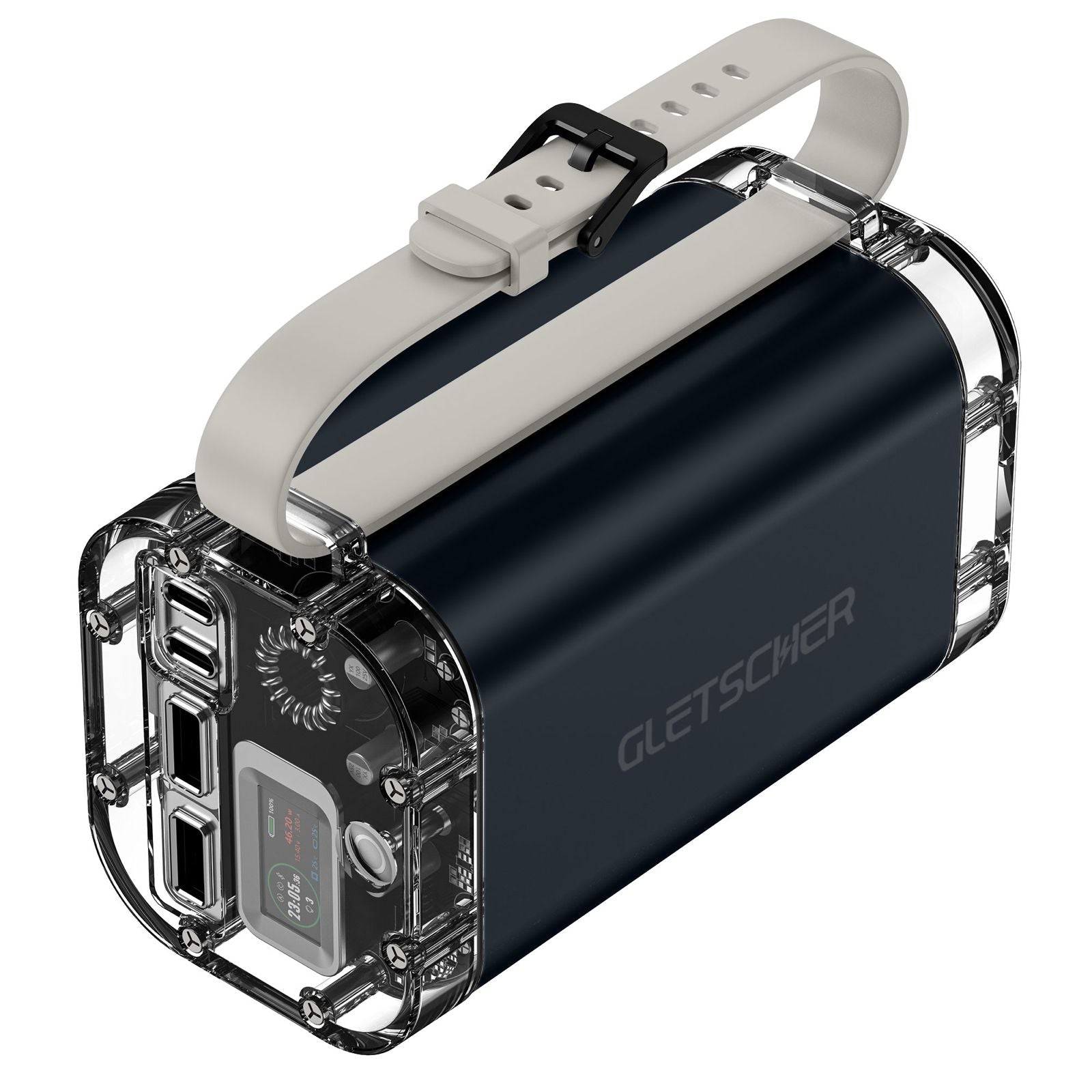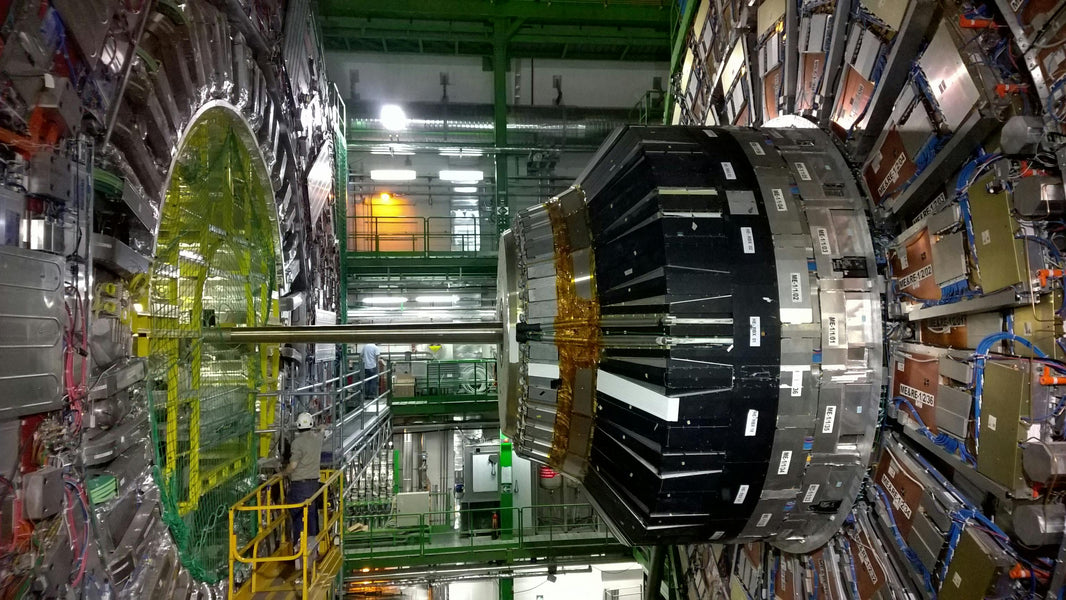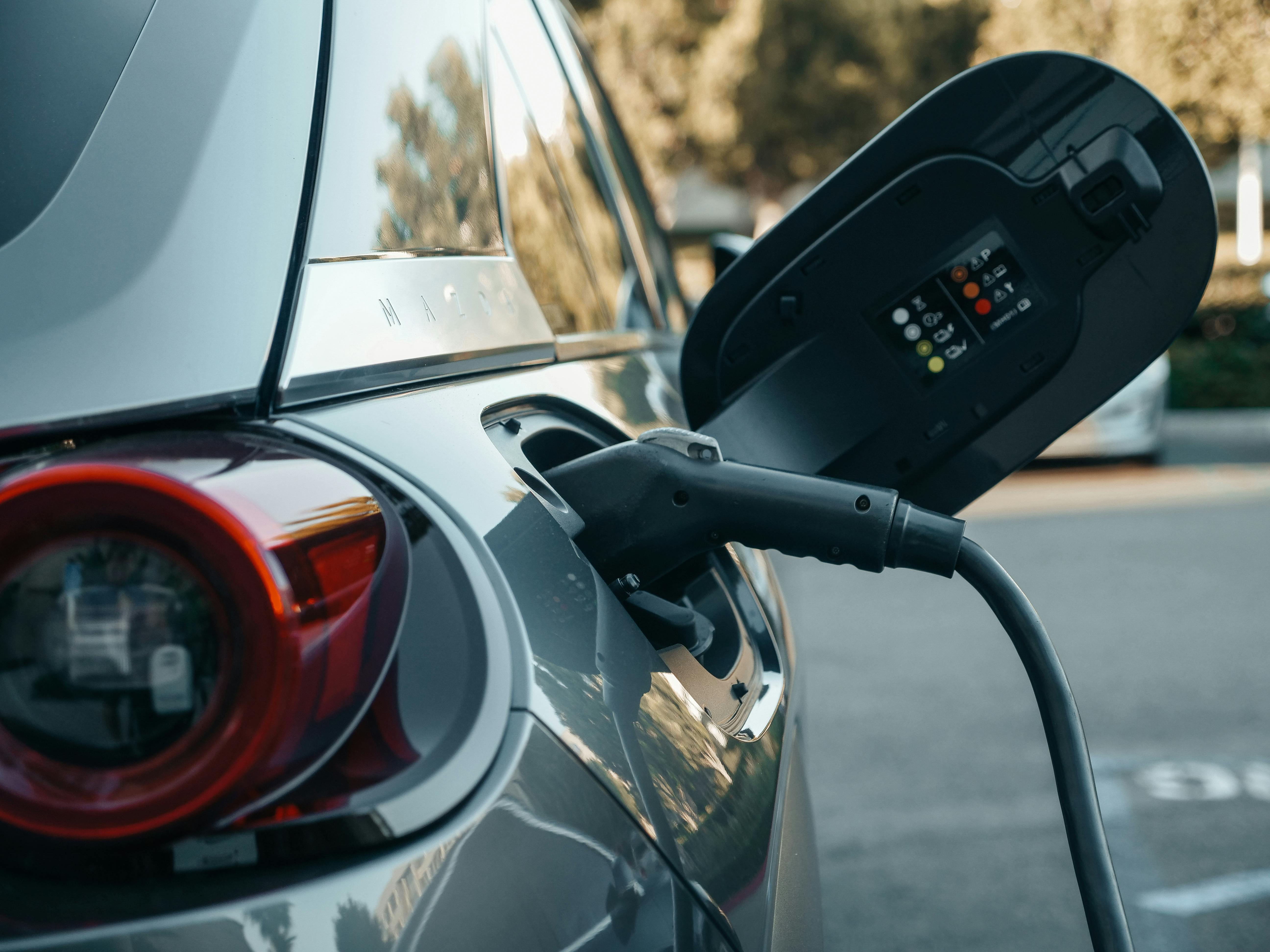In 2025, the solar energy landscape is evolving faster than ever. Is your solar investment truly future-proof? Government energy planners, infrastructure consultants, solar EPCs, and investors all face a critical question: Will today’s solar infrastructure meet the demands of tomorrow? Solar power is breaking records – global investment in solar is set to hit $450 billion in 2025, making it the single largest area of energy spending worldwide. In fact, between 2024 and 2030, solar PV is expected to account for 80% of the growth in global renewable capacity. With high stakes, ensuring your solar projects are scalable and resilient isn’t just smart – it’s essential. This guide explores how to design scalable solar infrastructure that can adapt, expand, and thrive well into the future, blending technical insights, inspirational vision, and policy-aware thinking.
A utility-scale solar farm showcases the expansive potential of modern solar infrastructure. Today’s solar projects can span vast areas, delivering gigawatts of clean energy and exemplifying how scalability is changing the renewable energy landscape. Such large-scale installations underscore why designing systems for growth and longevity is critical in 2025 and beyond.
Why Future-Proofing Solar Infrastructure Matters
The push for sustainability and energy security has never been stronger. 91% of new power capacity in 2023 came from renewables like solar and wind, and nations are implementing ambitious climate policies to reach net-zero targets. But a solar project that meets today’s needs may fall short as energy demands grow and technology leaps forward. Future-proofing is about staying ahead of the curve – designing solar energy systems that remain effective, efficient, and compliant with evolving requirements for years to come.
Consider the recent example of Masdar’s planned solar farm in Abu Dhabi: a colossal 5.2 GW solar PV plant paired with 19 GWh of battery storage to deliver 1 GW of continuous clean power. This project – the world’s first 24/7 solar PV+battery installation – is tackling the intermittency challenge by generating energy around the clock. The message is clear: integrating energy storage at scale transforms solar from a daylight-only resource to a reliable, baseload power source. Planners and investors who design with such integration in mind are effectively future-proofing their solar investments against the variability of sunshine.
Future-proofing also matters for financial and policy reasons. Solar assets typically operate for 25+ years, during which grid rules, incentive structures, and energy pricing can change drastically. A system that is scalable and adaptable can respond to new opportunities (like providing grid services or expanding capacity for electrified transport) and avoid obsolescence amid regulatory shifts. In short, building scalability into solar infrastructure protects the return on investment and ensures alignment with long-term sustainability goals.
Trends Shaping Scalable Solar Systems in 2025
Staying updated on current trends is key to making solar infrastructure scalable. Here are some of the top trends in 2025 driving the design of future-proof solar systems:
Ultra-Efficient Solar Panels: Photovoltaic technology has seen tremendous advances in efficiency and output. The introduction of PERC (Passivated Emitter and Rear Cell) in 2016 and TOPCon (Tunnel Oxide Passivated Contact) cells in 2022 significantly boosted panel performance. TOPCon panels now approach ~28% efficiency (up from ~24% with older PERC tech) and have rapidly become industry-standard. By bBy2024, TOPCon modules made up 74% of shipments among top manufacturers. For investors and EPCs, this means today’s cutting-edge panels like Gletscher Energy’s Makellos series can deliver up to 720W per panel using TOPCon and advanced cell technology. High-output, low-degradation panels allow more capacity in the same footprint and greater energy yield over time, providing a strong foundation for scalability.
Battery Energy Storage Becomes Mainstream: Plummeting battery costs and technological improvements have made solar-plus-storage the new norm for future-ready projects. Global investment in battery storage is surging past $65 billion in 2025, reflecting its critical role in solar infrastructure. Whether it’s utility-scale lithium battery farms or distributed battery systems, storage enables load shifting, grid support, and backup power – all crucial for a resilient, scalable energy system. Gletscher Energy’s Onyx energy storage systems exemplify this trend: the Onyx LiPo all-in-one solutions offer modular battery options (from lithium-ion to advanced sulfur) that integrate seamlessly with solar and grid setups, providing flexible and scalable, future-ready storage for residential, commercial, and industrial needs. By incorporating storage from the start or ensuring storage readiness, solar installations can future-proof against changing peak demand patterns and ensure reliability even as grids evolve.
Smart Inverters and Digital Integration: The brains of a solar system – inverters and control software – are becoming smarter and more connected. In 2025, advanced inverters do more than convert DC to AC; they communicate with the grid, enable remote monitoring, and optimize performance through software updates. For example, Alloy Series inverters from Gletscher Energy range from 5 kW to 150 kW and come with remote monitoring and adaptive load management, making them suitable for everything from a small rooftop to a solar farm. These inverters are designed for seamless integration and can be updated to meet future grid codes or to add capabilities (like interaction with battery storage or smart home/industry systems). Along with IoT sensors and AI-driven analytics, smart inverters help predict maintenance needs and fine-tune energy management, ensuring your solar infrastructure operates at peak efficiency as it scales up.
Policy and Market Drivers for Scalability: Governments worldwide are incentivizing not just solar generation, but also grid flexibility and energy storage. In many regions, regulatory trends are encouraging solar plants to include storage or provide ancillary services, rewarding those that can deliver power when it’s most needed. Meanwhile, corporate clean energy buyers and utilities are seeking long-term power purchase agreements (PPAs) that favor projects capable of expansion or enhanced reliability. Keeping an eye on policies (like renewable portfolio standards, storage mandates, and smart grid initiatives) helps planners design solar infrastructure that aligns with future market conditions. Energy planners should also anticipate higher electrification (EV charging, electric heating), which will increase power demand – a scalable solar setup can expand capacity or incorporate new technologies (e.g., vehicle-to-grid systems) to meet these emerging needs.
Decentralization and Microgrids: Another trend is the rise of microgrids and distributed solar networks for resilience. Rather than one giant installation, many communities and campuses are deploying clusters of solar-plus-storage that can operate independently if needed. This modular approach inherently supports scalability – new nodes can be added to the network without redesigning the whole system. It also appeals to government planners focused on energy security: a network of distributed, scalable solar microgrids can keep critical services running during grid outages or disasters. Designing solar projects with microgrid-ready controls or as part of a broader decentralized plan can significantly “future-proof” against uncertainty.
In summary, 2025’s trends point to solar infrastructure that is bigger, smarter, and more integrated than ever. High-efficiency panels, ubiquitous storage, intelligent controls, supportive policy frameworks, and modular deployment models are collectively enabling solar investments that grow and adapt over time.
Design Principles for Scalable, Future-Proof Solar Systems
To translate these trends into practice, consider the following design principles when planning a solar project in 2025. These principles will help ensure your solar infrastructure remains scalable, resilient, and valuable throughout its life cycle:
Plan for Growth from Day One: Design your solar power system with expansion in mind. This might mean reserving physical space for additional solar panels (or a larger substation), choosing an inverter that can handle a higher capacity, or installing conduits and mounting systems that make adding more capacity straightforward. As one industry guide notes, scalability is the ability of a system to grow or adapt to changing energy needs without a major overhaul. By assessing future energy needs (for instance, a factory might double output, or a city’s electric vehicle fleet might surge) and building in headroom, you ensure the initial investment remains relevant as demand increases. In practice, working with experienced solar engineers can help configure an array that’s “pre-wired” for growth, saving time and cost when you scale up later.
Use High-Performance, Durable Components: Future-proofing starts with quality. Opt for high-efficiency solar modules and robust equipment that come with strong warranties and low degradation rates. Today’s premium panels like Makellos Lite Series boast advanced TOPCon/PERC cells and up to 720W output, delivering more power per square meter and long-term performance backed by 25+ year warranties. Likewise, inverters and mounting structures should be built to last and to withstand environmental extremes (heat, cold, wind, dust) expected over decades. Investing in durable, proven components ensures your system’s performance won’t degrade rapidly – a key factor for both scalability and return on investment. Additionally, consider components that are forward-compatible: for example, inverters that can accept firmware updates for new grid requirements, or battery systems that can be augmented with additional modules as storage needs grow.
Integrate Energy Storage and Backup: Energy storage is the linchpin of a future-proof solar installation. Whether you include batteries at the outset or design the system for easy storage addition later, it’s crucial to enable solar energy to be stored and dispatched flexibly. All-in-one storage solutions like Gletscher Energy’s Onyx LiPo series are designed for exactly this – they support multiple battery chemistries and can scale from small backup units to large battery banks, all while maintaining seamless integration with the solar PV system and grid controls. Storage-ready design might include using hybrid inverters (that can handle both solar PV and battery inputs), allocating space in electrical rooms for battery racks, and including safety features like battery disconnects. Additionally, consider Uninterruptible Power Supply (UPS) elements for critical loads – Gletscher Energy’s Vertra UPS, for example, can provide instant backup to sensitive equipment. By pairing solar with storage and backup, you not only improve resilience (power during nights or outages) but also open future revenue streams (like peak shaving, frequency regulation, or energy arbitrage) that can enhance the project’s value over time.
Employ Smart Inverters and Monitoring Systems: A scalable solar infrastructure is an intelligent one. Make sure to include inverters and a management system that offers advanced monitoring, control, and communications. Modern “smart inverters” can perform grid-support functions (voltage regulation, frequency response), communicate with utility operators, and be controlled remotely via software or even AI-driven energy management platforms. Gletscher Energy’s Alloy Hybrid Inverters are a good example, ranging up to 150 kW; they provide remote monitoring and adaptive load balancing, and are engineered for smooth integration in on-grid, off-grid, or hybrid setups. Complement the hardware with a cloud-based monitoring platform that tracks performance in real-time, sends alerts for maintenance, and can even predict issues via analytics. Such systems not only keep the current installation running optimally but also make it easier to integrate future expansions (new panels, batteries, or even other energy sources) because everything can be orchestrated in one intelligent control environment. In essence, data and automation are your allies in scaling up efficiently.
Design for Resilience and Reliability: Future-proof also means failure-proof to the extent possible. Climate change is bringing more extreme weather, so design solar farms and rooftop systems to handle worst-case scenarios – think sturdy racking for high winds, panels with hail resistance, and waterproofing for flooding. Incorporate redundancy where appropriate: for instance, multiple smaller inverters rather than one central inverter can localize any failure and simplify scaling (you can add units in parallel). Use high-quality cabling and protection devices (Gletscher Energy offers fire-resistant cables, for example) to reduce fire risk and meet strict safety codes. Also, plan for maintenance access – scalable doesn’t only mean adding capacity, it also means you can maintain and replace components over time without major disruptions. A well-thought-out maintenance plan (with periodic inspections, cleaning schedules, and parts replacement timelines) will ensure your solar asset remains reliable as it ages. Remember, a system that runs reliably for 30 years is far more “future-proof” than one that hits trouble at year 10 due to neglect or subpar parts.
Align with Policy and Incentive Structures: A truly future-proof solar design considers the regulatory horizon. Stay informed about upcoming codes or incentives: for example, some regions are moving toward requiring “smart export” controls, dynamic feed-in tariffs, or minimum storage capacities for new solar projects. If you design to exceed today’s standards – say, by including the capability for reactive power support or islanding in a microgrid mode – you’ll be ahead of compliance if these become mandatory. Likewise, factor in current incentives for scalable features: many utilities offer better rates for solar projects that can guarantee delivery during peak times (which you achieve with storage), and some governments provide grants or tax credits for integrated solar-and-storage systems. By aligning your project with these trends, you not only maximize immediate benefits but also ensure your system is positioned for future market advantages rather than being left behind. Engaging with policy-makers or consultants during the design phase can provide insights into making your solar infrastructure as policy-proof as it is technical.
Choose Integrated Solutions and Partnerships: Finally, consider working with an integrated energy solutions partner who can deliver a cohesive, end-to-end system. Scalable solar infrastructure is not just about individual components, but how well they work together as a whole. When governments or developers source panels from one vendor, inverters from another, and batteries from yet another, it can lead to misaligned systems, delays, and higher costs. A unified approach – such as Gletscher Energy’s portfolio that spans Makellos solar panels, Alloy inverters, Onyx storage, EV chargers, and control software – ensures every piece is compatible and optimized as part of a complete system. As Gletscher Energy’s philosophy states, it’s about “designing a complete, intelligent system — one that’s built to last, engineered for scale, and aligned with long-term sustainability goals”. By partnering from the early design phase, an integrated provider can help configure a solution that is technically sound, seamlessly interconnected, and truly future-proof. The result is a solar infrastructure that can scale up or evolve with minimal friction, because it was conceived as a unified, forward-looking system from the start.
By adhering to these design principles, stakeholders can significantly increase the longevity and adaptability of their solar projects. A scalable design means the difference between a solar investment that yields dividends for decades versus one that hits a ceiling in a few years.
A solar-powered home with integrated battery storage and EV charging. Even at the residential or commercial scale, combining on-site generation with smart storage and electric mobility showcases a future-proof approach. Seamless integration of solar panels, an Onyx energy storage unit (wall-mounted), and EV charging not only maximizes renewable energy usage today but also establishes a flexible infrastructure ready for tomorrow’s energy needs. Such a holistic design can be scaled up to communities and cities, providing a blueprint for sustainable growth.
Conclusion: Building Tomorrow’s Solar Infrastructure Today
Designing scalable solar infrastructure is as much about vision as it is about technology. It requires looking beyond the immediate project scope and anticipating how needs and opportunities will evolve. As we’ve discussed, the year 2025 finds solar energy at the forefront of the clean energy transition – from massive solar-battery parks delivering round-the-clock power, to smart grids balancing decentralized solar inputs. By embracing high-efficiency panels, integrating storage and intelligent controls, and planning for growth, we future-proof our solar investments against the uncertainties of tomorrow.
For government planners and policymakers, scalable solar systems are key to meeting climate commitments and ensuring energy security in the long run. For consultants and EPC firms, they represent resilient, expandable solutions that can adapt to client needs and new technologies. And for investors, a future-proof design protects the project’s profitability and unlocks new value streams (such as selling flexibility or additional capacity) with minimal additional capital.
Ultimately, making your solar investment future-proof is about building in flexibility, reliability, and foresight. It’s about constructing not just a power plant, but an energy platform that can grow and innovate along with our sustainable future. Remember that energy isn’t just about supply – it’s about vision, integration, and execution. By applying the principles of scalable design and leveraging the latest solutions – like Makellos high-output panels, Alloy smart inverters, and Onyx modular storage systems – you position your project to harness not only the sun’s rays but also the full potential of tomorrow’s technology and market trends.
Ready to future-proof your solar investment? Start by incorporating these design strategies into your next project. Whether you’re upgrading a municipal power grid or planning a solar farm for a new industrial zone, think big, think long-term, and design for change. By doing so, you’ll ensure that your solar infrastructure continues to deliver value and inspiration for decades to come, lighting the way to a truly sustainable energy future.
Call to Action: To learn more about designing scalable, integrated solar solutions, or to explore Gletscher Energy’s portfolio of solar technologies (from Makellos panels and Alloy inverters to Onyx storage and beyond), reach out to our team. Let’s build a solar infrastructure today that’s ready for the challenges and opportunities of tomorrow. Together, we can power a future that is not only bright but also built to last.









